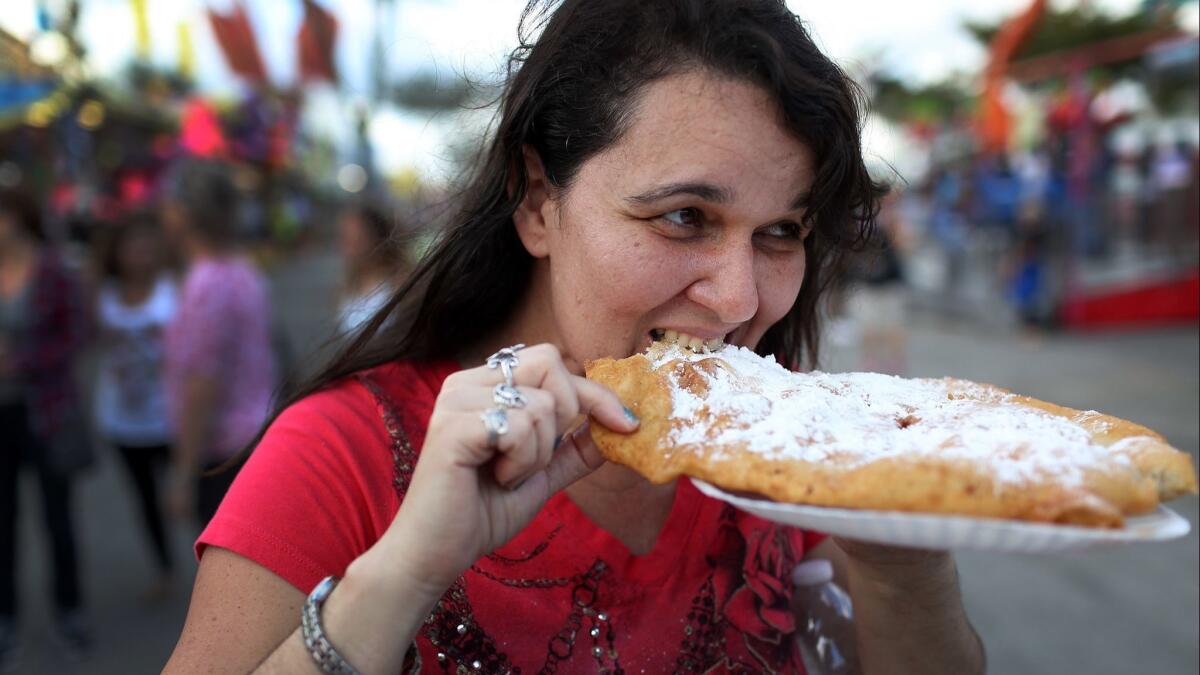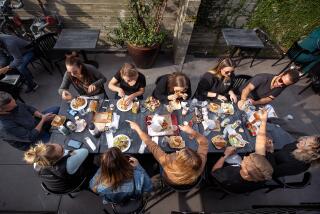Foods that are both fatty and sweet can hijack the part of the brain that regulates food consumption

It may have taken thousands of generations of hunting, gathering, farming and cooking to get here. But in the end, the genius of humankind has combined fats and carbohydrates to produce such crowning culinary glories as the doughnut, fettuccine Alfredo, nachos and chocolate cake with buttercream frosting.
It goes without saying that these delectables do not exist in nature. It turns out combinations of carbohydrates and fats generally do not exist in the landscape in which man evolved.
Neither, new research finds, does the human capacity to intuit the caloric content of such gustatory delights. Instead, the human brain, when confronted with food products that combine fat and carbohydrates, responds with a surge of motivation that outstrips the response elicited by foods that are high in fat only or in carbohydrates only.
It’s a man-made conundrum like many others, and which probably has helped fuel a worldwide crisis of obesity: What do we do when the products of our genius and our industry short-circuit our evolved traits and lead us down a path of destruction?
The study just published in the journal Cell Metabolism doesn’t really tell us something we didn’t at some level know: We eat too much, and too much of the wrong thing, and we’re paying the price in higher rates of heart disease, diabetes and cancer, and in lives shortened by obesity.
But it does shed some light on why, and why we find everything from the dowdy Ritz cracker to the most sublime pastry confection so very irresistible: It’s that diabolical combination of fat and carbs. Calorie for calorie, it found, we’ll take something fatty and easily converted into sugar over something that’s just fatty or something that’s just high in carbs. And we’ll do so with scant recognition of just how caloric that choice is.
The authors of the new research went about showing this by collecting 56 lean study participants with an average age of 25. A few hours after feeding these subjects a breakfast designed to leave them somewhat hungry, researchers gave their recruits a small monetary allowance, showed them 39 pictures of different foods that would be familiar, and asked the subjects to place bids on those they’d most like to eat. If they outbid the computer, they’d be allowed to use their allowance to buy and eat that item at the end of the game.
The subjects were also asked to judge how calorific each food item they saw was, and to say how much they liked the pictured food. All of the snack portions pictured actually contained the same number of calories. But one-third of the pictures were of items high in carbohydrates, including jelly beans, white bread and spaghetti, one-third were foods high in fat, such as plump wedges of cheese and slices of salami, and one-third were foods that combined fat and carbs, including a stack of round buttery crackers, a pile of chocolate candies, and a multilayered slice of pastry.
Finally, the subjects looked at all of the pictures while having their brains scanned to see which region of the brain became most active as they pondered different kinds of food.
In a series of analyses that combined and cross-referenced subjects’ answers, the researchers found that no matter how much subjects said they liked items that were fatty or carby, they were willing to pay most for (and thus most likely to get the chance to eat) the items that combined fat and carbs. And their brain activity while looking at the pictures told the same story: They might score their liking of salami or jelly beans just as high as they did the cake or crackers. But the items that prompted the reward circuits of their brains to come most alive were the carb and fat combinations.
When asked to rate the calorie content of the pictured items, subjects were a good judge of the fatty items’ value. But they fared more poorly judging the calories in carbohydrate-rich snacks, and in snacks that combined fat and carbs.
“Fat and carbohydrate interact to potentiate reward,” write the authors of a study just published in the journal Cell Metabolism. “Combining fat and sugar independently increases the reward value of foods independently of caloric load, liking or portion size, and disrupts the ability to accurately estimate the energy density of fatty foods.”
Translation: So long as concoctions that combine fat and sugar call out to us from food shelves, shop windows, television screens and menus, we’re vulnerable to our most primal instincts, which have not evolved to ignore, dislike or say no to these products of human invention.
MORE IN SCIENCE
Ties between researchers and alcohol producers prompt NIH to shut down study of moderate drinking
All around the world, humans are forcing other mammals to be more active at night
Scant abortion-related ER visits suggest there’s no medical basis for restrictive laws, study says







